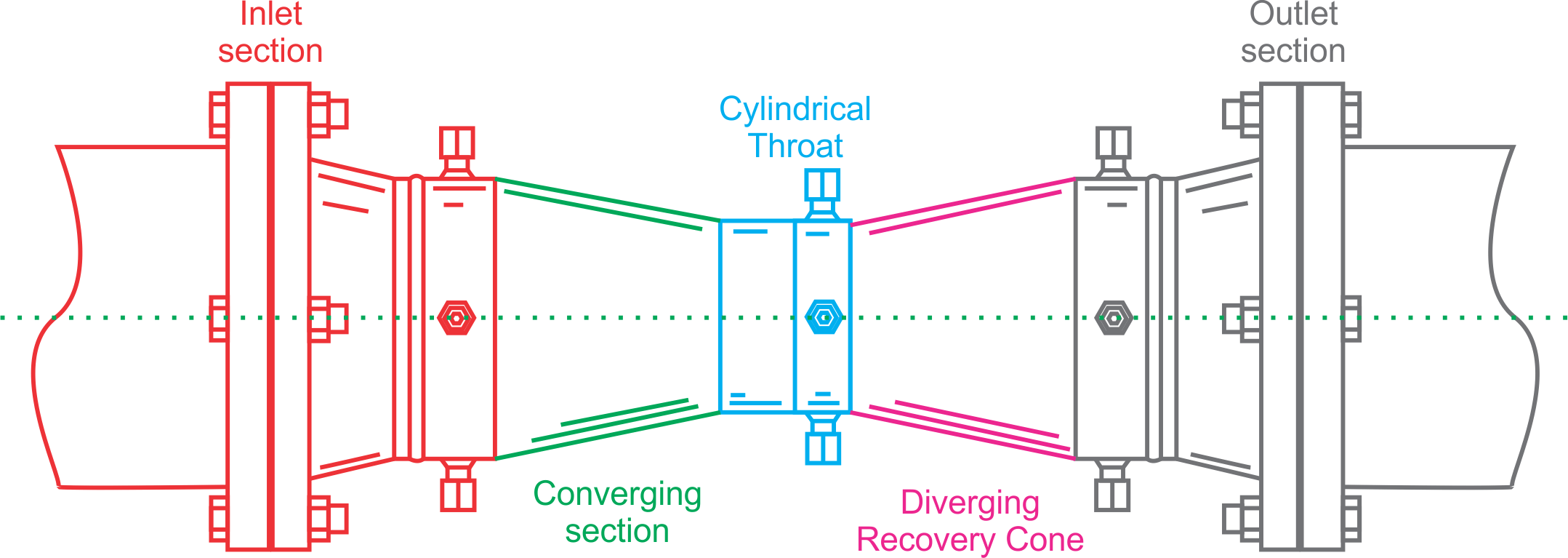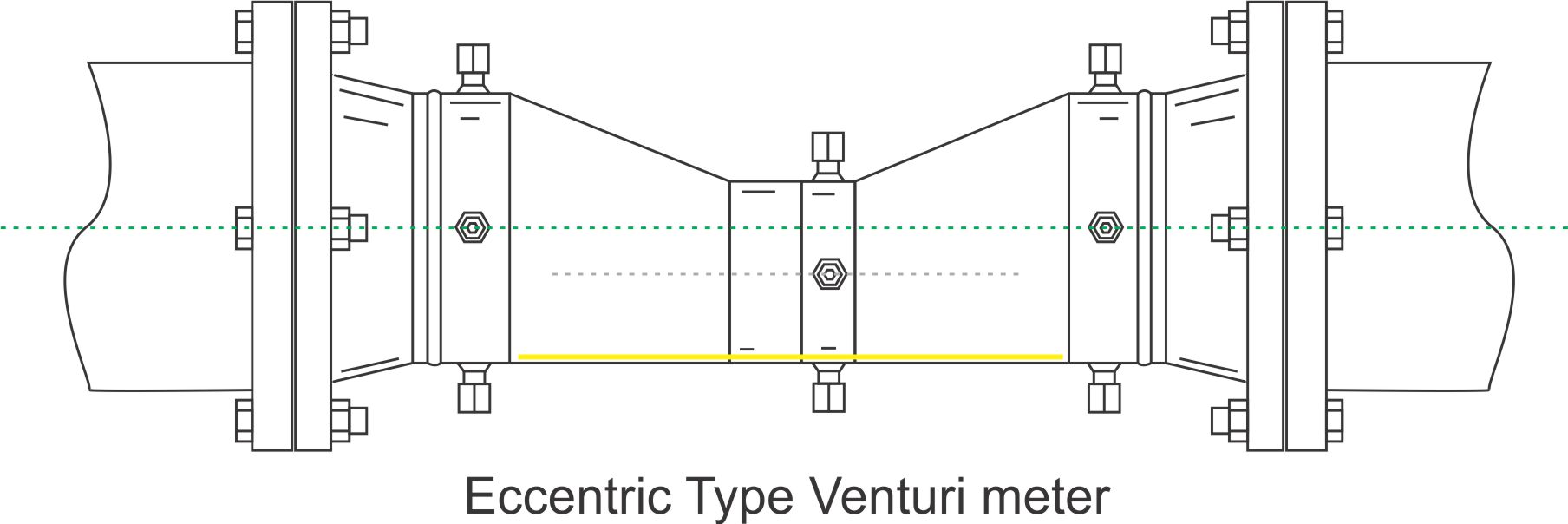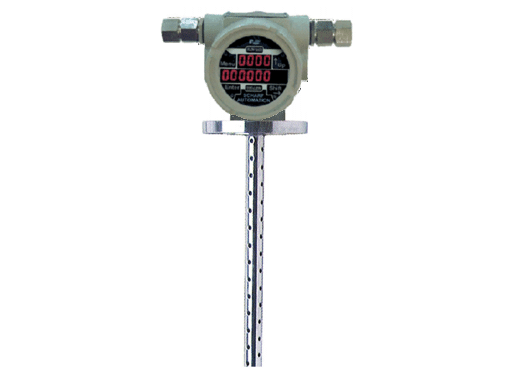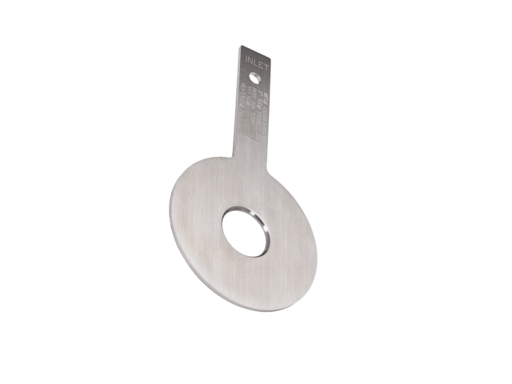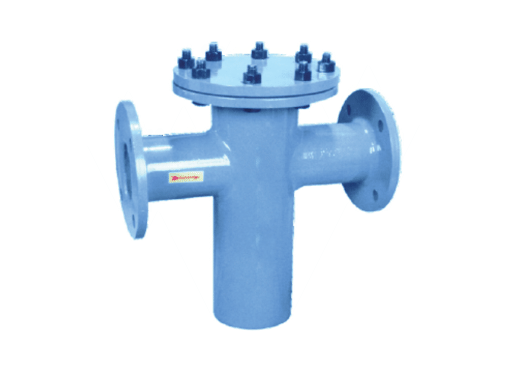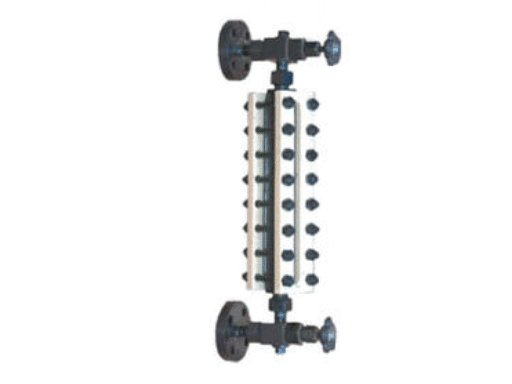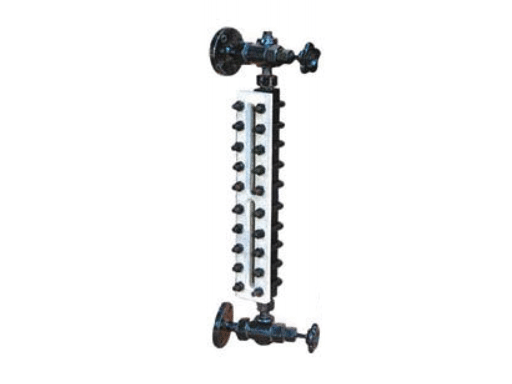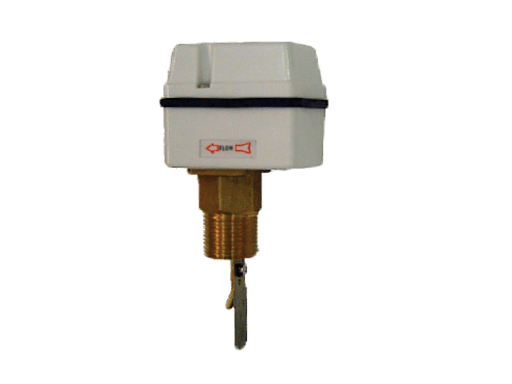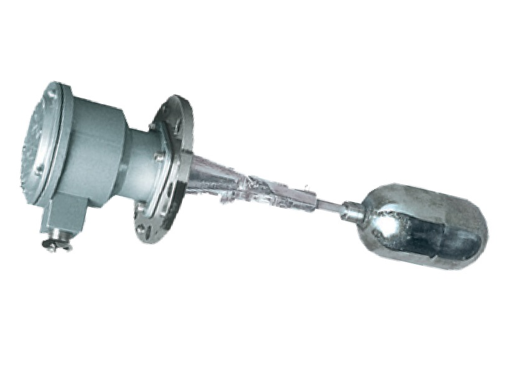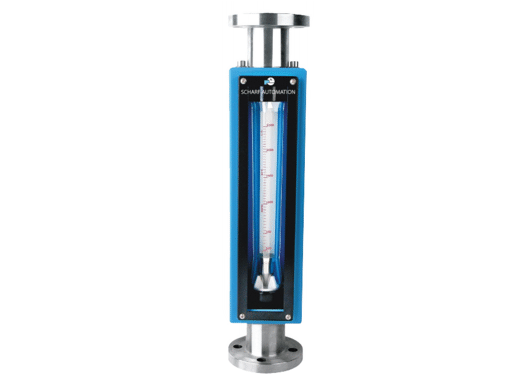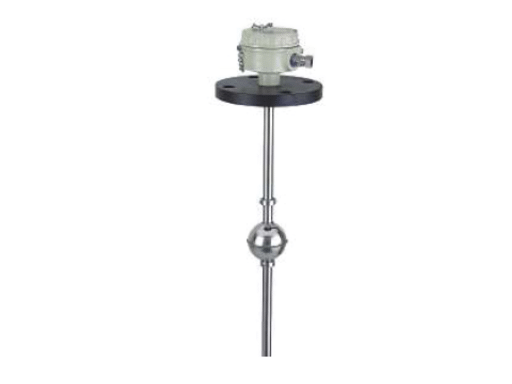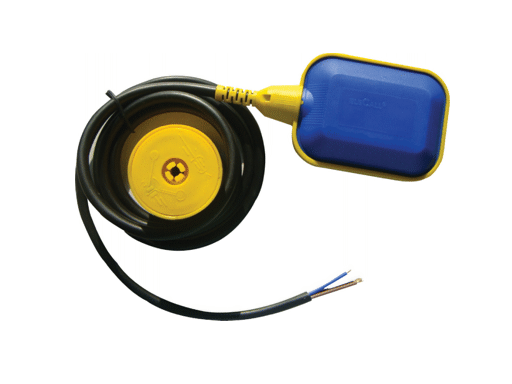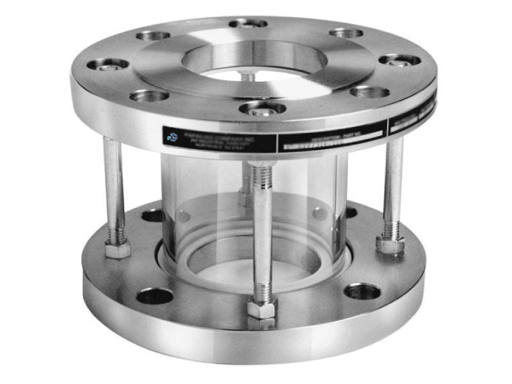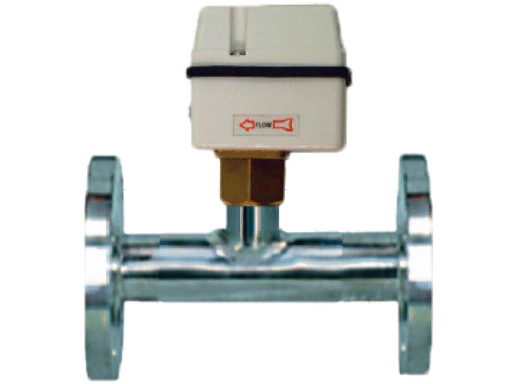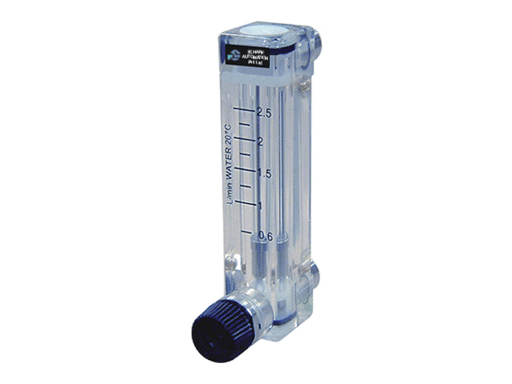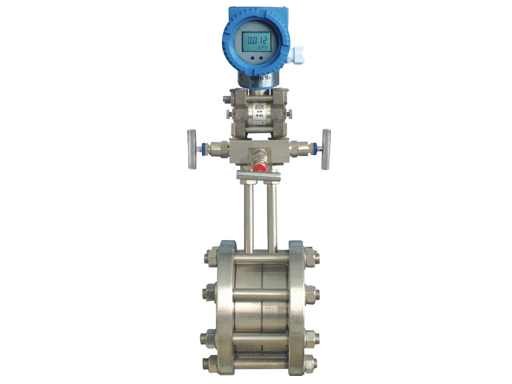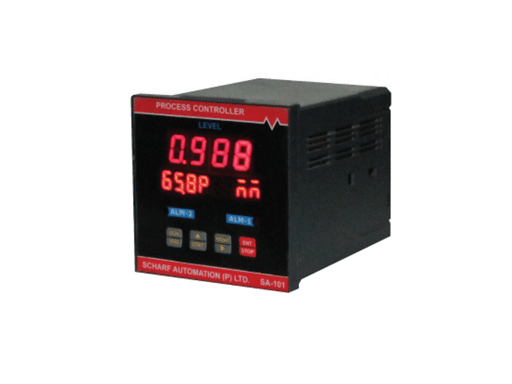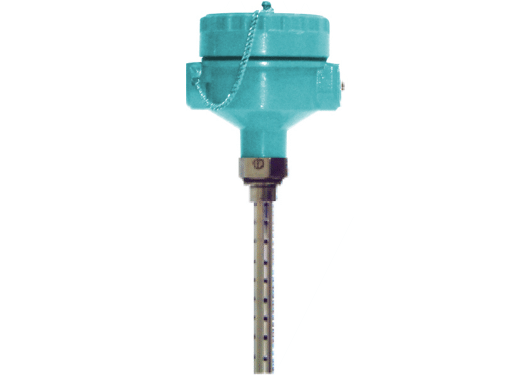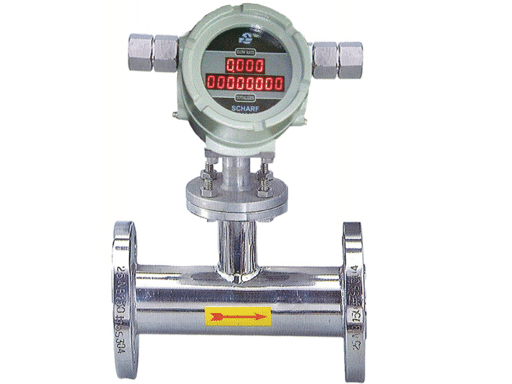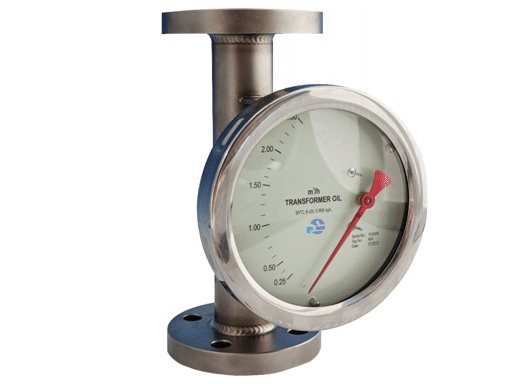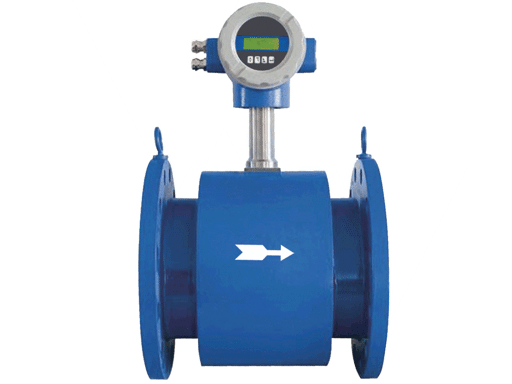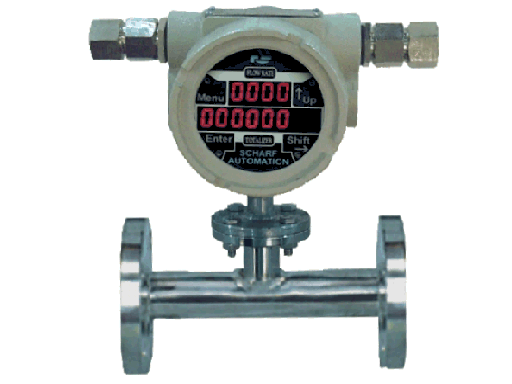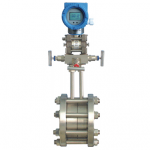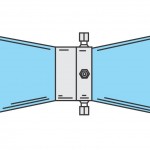Venturi Meter
Introduction
A Venturi meter is basically a type of flow meter with a specially designed tube, used to measure the flow velocity of liquids especially highly viscous liquids. It is one of the most accurate means of measuring the flow. Just like Electromagnetic Flow meter, it has no pressure drop (head loss) hence is very useful in places where pressure drop should be minimal and where a greater emphasis is laid on the highest accuracy achievable.Principle:
When a fluid, whose flowrate is to be determined, is passed through a Venturi meter, there is a drop in the pressure between the Inlet section and Cylindrical Throat of Venturi meter. The drop in pressure can be measured using a differential pressure measuring instrument. Since this differential pressure is in direct proportion to the flowrate as per the Bernoulli's Equation hence the differential pressure instrument can be configured to display flowrate instead of showing differential pressure.Construction:
Inlet Section
A linearly extending section of the same diameter as the inlet pipe for an end connection for an incoming flow connection. Here we measure the inlet pressure of the fluid / steam / gas.Cylindrical Throat
In this section the flow velocity and pressure is constant. Here we measure the value of pressure P2 and thus can find out the differential pressure with respect to the Inlet section pressure P1.Converging section
This section converts the Pressure head of the liquid into a Velocity head. The cross section of the fluid / steam / gas decreases and the velocity increases with a loss of pressure head. The angle of convergence designed in general is usually 19-23 degrees.Diverging recovery section
Here we convert the velocity head to pressure head. The velocity decreases and the decreased velocity head is recovered as pressure head. The cone of the diverging recovery section is usually designed at an angle of 5-15 degrees.Sections 1 & 2 of the Venturi meter, are provided with an opening for attaching a differential pressure sensor (u-tube manometer, differential pressure indicator).
Material of construction:
The Venturi meter tubes in general are made of cast iron, steel for higher lines sizes. For smaller line sizes they are made of glass, acrylic, rulon etc.Shape & size of Venturi meter:
Venturi meters are built in different forms depending upon the application specific requirement, as mentioned below:- Extended-form or the traditional Venturi meter.
- Condensed-form where the outlet cone is shortened to save space.
- An eccentric form, where the bottom walls of each of said sections are in alignment and present a smooth straight surface to the liquid, hence reducing chances of deposition.
- The Rectangular form used in air ventilation ducts.
Operation of Venturi meter:
- The fluid flows inside the Inlet section of the Venturi meter having a pressure P1.
- As the fluid proceeds further into the Converging section, its pressure reduces gradually and it finally reaches a value of P2 at the end of the Converging section and enter the Cylindrical section.
- The differential pressure sensor connected between the Inlet and the and the Cylindrical Throat section of the Venturi meter displays the difference in pressure (P1-P2). This difference in pressure is in direct proportion to the flow rate of the liquid flowing through the Venturi meter.
- Further the fluid passed through the Diverging recovery cone section and the velocity reduces thereby it regains its pressures. Designing a lesser angle of the Diverging recovery section, helps more in regaining the kinetic energy of the liquid.
Specifications of Venturi meter:
- Line Size: 100 mm to 800 mm
- Accuracy: +/-0.25% to +/-3.0%.
- Flow coefficient value: 0.98 for all ratios of diameter
- Beta ratios: 0.3 and 0.75.
Application of Venturi meter:
- It is used where high pressure recovery is required.
- Can be used for measuring flow rates of water, gases, suspended solids, slurries and dirty liquids.
- Can be used to measure high flow rates in pipes having diameters in a few meters.
Advantages of Venturi meter:
- The Venturi tubes can be used to handle fluids that contain slurries / sludges (for example: Sugar Cane Mill) , because these Venturi tubes contain no sharp corners and do not project into the fluid stream.
- Negligible possibility of clogging with deposits or sludge.
- A higher Coefficient of discharge obtainable.
- Operational response can be designed with perfection.
- Installation direction possibilities: Vertical / Horizontal / Inclined.
Limitations of Venturi meter:
- Venturi meters are expensive
- Cannot be used in space constrained application because of their significant size.
- Flow straighteners are required at the inlet and the outlet to attain streamline flow thereby increasing the cost and space for installation further.
- Minimum line size for Installation of Venturi meter is limited to 1/2" (0.5 inch).

